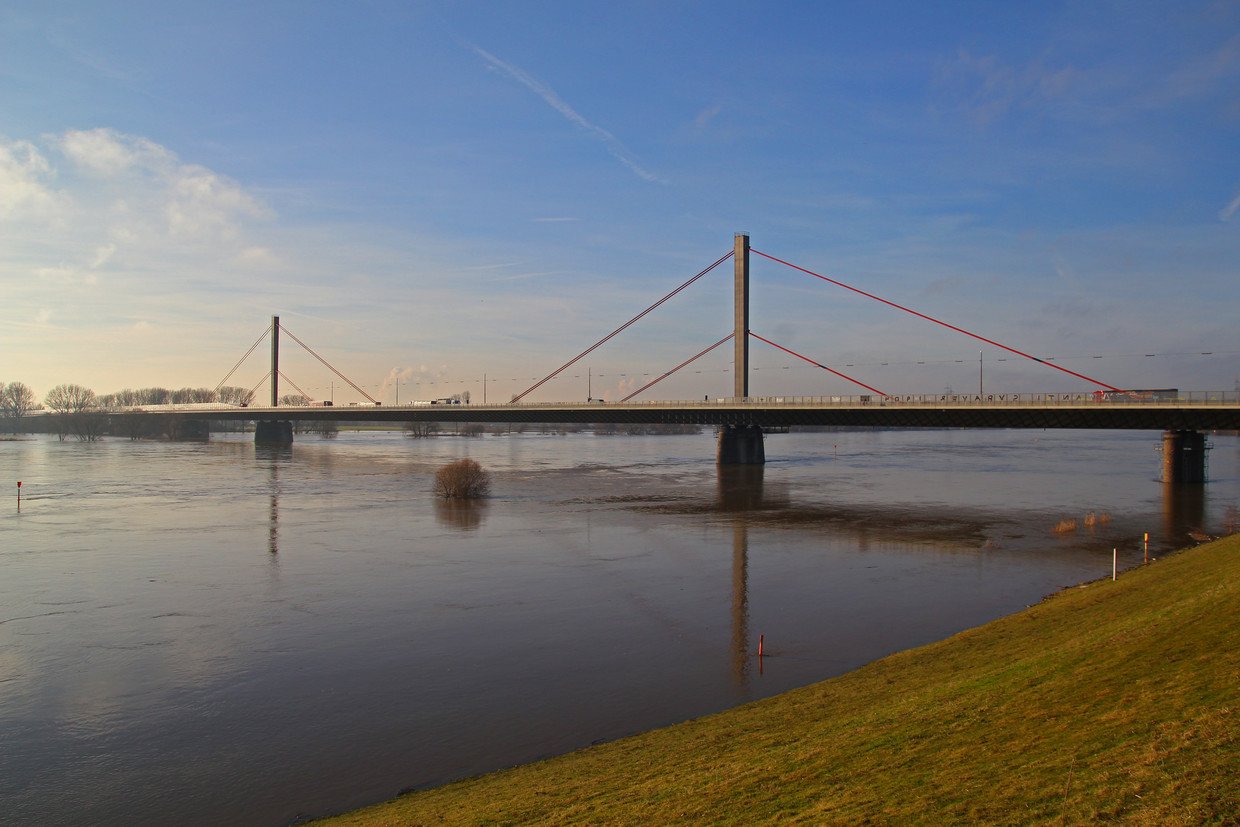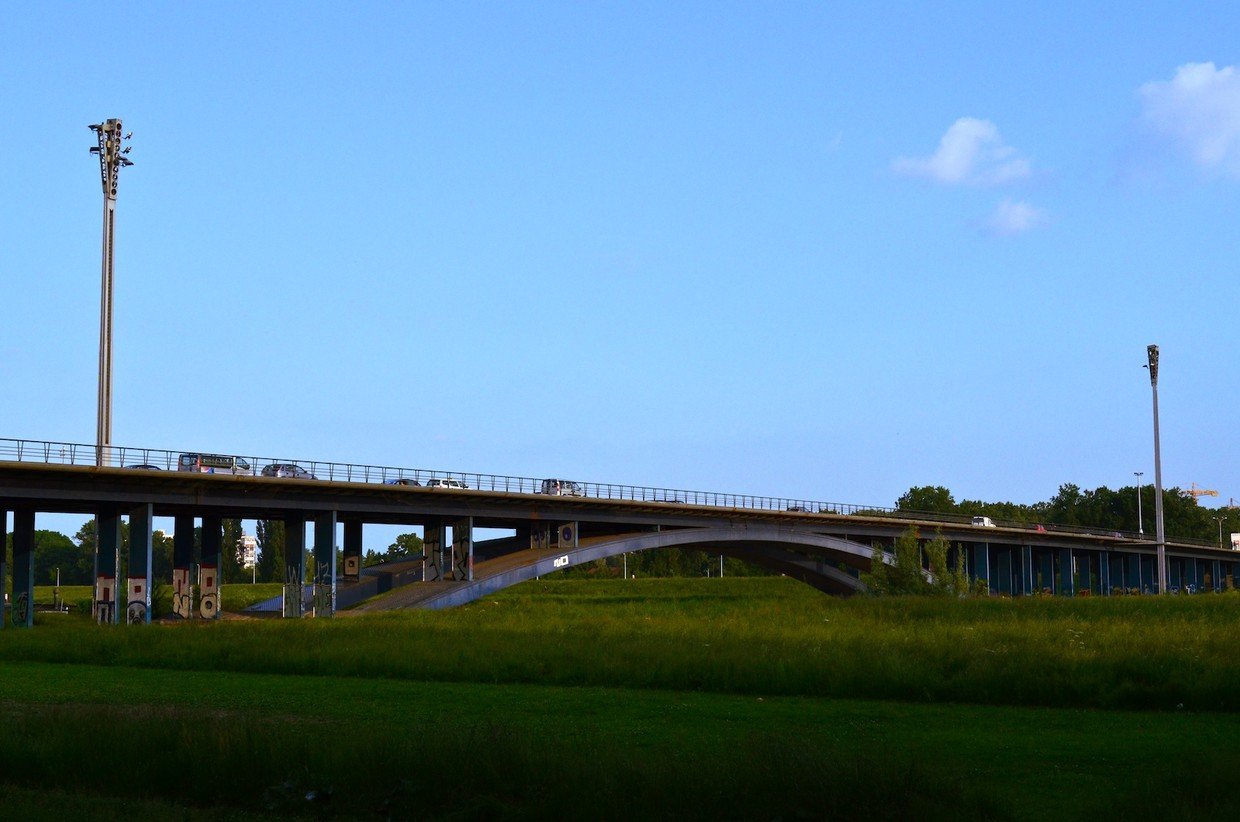One year after Genoa tragedy: Are Europe’s bridges any safer?
Italy is commemorating one year since the Morandi Bridge in Genoa collapsed and killed 43 people. The incident raised many questions about the crumbling European infrastructure, but did it spur swift action?
Millions of people cross them without thought every single day, but there are tens of thousands of bridges in Europe that have been deemed unsafe or structurally deficient.
When a 656-foot stretch of the Morandi bridge collapsed last August, eyewitnesses described hearing the "roar" of the massive structure as it crumbled. Video footage captured the horrifying moment, when dozens of cars were sent tumbling to the ground.
Rescue workers spent days pulling bodies from the wreckage. In one case, the bodies of three members of the same family were found in their car, crushed beneath huge slabs of concrete.
In the aftermath, promises were made to solve other ticking infrastructural time-bombs and Italian Deputy Prime Minister Matteo Salvini entered into a war of words with EU officials over who was to blame for the disaster.
The deadly incident also triggered investigations in Italy and elsewhere into the state of the continent's bridges — and the results are controversial.
A Europe-wide problem
Public outcry following the Genoa tragedy prompted the government to allocate more funds for monitoring and maintaining the 14,000 road bridges in the country, including 40 million allocated for the use of sensors on viaducts to allow real-time monitoring of stability.
But a year later, of the thousands to be monitored, 1,918 are still in need of "urgent interventions" and are already subject to transit limitations or closed to traffic, according to a study by the Union of Italian Provinces.
There are also many questions regarding the quality of safety inspections. One investigation sparked by the Morandi bridge collapse found that reports on bridge safety from Spea, the company responsible for monitoring on behalf of Autostrade Italia, had been "sweetened" and re-touched to look more positive.
In France, there is a similarly grim situation. A study commissioned by the French Transport Ministry and published last year, just months before the Genoa bridge fell, warned that seven percent of French bridges are at "risk of collapse." The audit noted that French bridges are only repaired, on average, 22 years after the first signs of structural deterioration are seen.
A French Senate report in June found that "at least 25,000" bridges are still in a "bad structural state" — weakened by ageing, underinvestment and lack of proper maintenance. That’s about 10 percent of the country’s bridges.
Also on rt.com Bridge that collapsed & killed 43 in Genoa last year is BLOWN UP (VIDEO)Upon learning of the bleak figures, senators immediately called for a 'Marshall Plan' for France's bridges — a reference to the economic plan to rebuild Europe after World War II.
Senator Hervé Maurey told Europe 1 radio that the “worst [bridges] are in towns where sometimes we don’t even know how many bridges there are let alone the state they're in.”
In Germany, the picture appears to be somewhat better. A 2017 report warned that 12.4 percent of the country's bridges were in poor condition. Two years later, this January, Jürgen Krieger of the Federal Highway Research Institute (BASt) told Government Europa that Germany's bridges are "safe" but said the ageing infrastructure is still in need of upgrading and refurbishment to bring it up to the standard necessary.
For a real life example, there is no need to leave the wealthy Western part of the country. Let's look at Cologne. For the past couple of years, large vehicles have been subject to restrictions on the Leverkusen Bridge over the River Rhine, but the bridge, which a former regional transport minister called a "monument to the fatal state of German infrastructure," is set to be rebuilt entirely by 2020.

But let's go East. A busy but "dangerous" road bridge in Riga, Latvia was closed earlier this year after public worries about a possible collapse. Until Interior Minister Sandis Ģirģens made the executive decision to close the bridge, officials from the Rīga City Council had refused to take action, despite seeing the results of an expert assessment and admitting the bridge was in poor condition. Ģirģens accused council officials of “playing with people's lives”and said he made the decision to avert “potential tragedy.”

The Liberty Bridge in Zagreb, Croatia has been described by Balkan Insight as "notorious" for the big blocks of concrete which occasionally fall off it. The bridge has been slated for a major reconstruction, but the project has been plagued with delays. In the aftermath of the Genoa collapse, Bulgaria also announced plans to upgrade 200 of its bridges. But these necessary improvements can’t be made overnight; they will still take time and plenty of money.
Also on rt.com Bridge that collapsed & killed 43 in Genoa last year is BLOWN UP (VIDEO)The remaining parts of the Morandi bridge are now gone, having been destroyed by controlled explosions in June, wiping a sad reminder from the landscape. Yet the wounds are still fresh for the families of the victims of the deadly collapse. A ceremony to mark the first anniversary of the tragedy will be held in the city on Wednesday, but some families have decided to opt out, not wanting to watch a parade of politicians.
Roberto Battiloro, whose 29-year-old son was one of the 43 victims, told Italian media that he did not just die, but that “the state killed him” and “whoever made a mistake must pay.”
“We will not go to Genoa to watch catwalks [of politicians.],” he said.
Indeed, the Genoa tragedy itself could have been avoided if officials had acted on earlier warnings. A civil engineering professor at the University of Genoa prophetically cautioned in 2016 that maintenance costs for the bridge were so exorbitant it would just be "cheaper to build a new one."
But one year on, the question whether the tragic collapse of the bridge made the European officials question the essential problem that cheap isn’t always good still remains.
Think your friends would be interested? Share this story!














